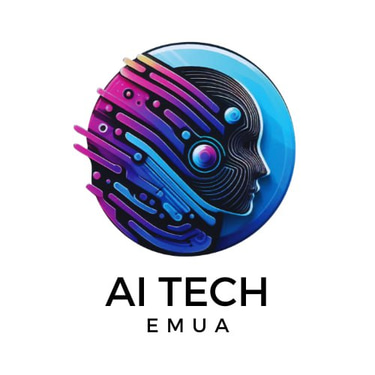Building an AI-Driven Subscription Service: A Comprehensive Guide to a Recurring Revenue Model
This article explores how to create an AI-driven subscription service that generates consistent revenue. It covers the key steps, including identifying a niche market, defining the AI's role (e.g., personalization, automation, prediction), choosing the right pricing model, and ensuring a seamless user experience. It also discusses important considerations such as data collection, ethical AI usage, retention strategies, legal compliance, and marketing techniques. By integrating AI with a subscription model, businesses can deliver continuous value and achieve scalable, recurring revenue.
AI EARNINGS
AI Tech Services
9/23/20243 min read


Building an AI-Driven Subscription Service: A Recurring Revenue Model
Subscription-based services are one of the most successful business models today, offering recurring revenue and consistent cash flow. Incorporating AI into a subscription model can create value for users by offering personalized services, automation, and advanced insights. Here's how you can build an AI-driven subscription service:
1. Identify a Niche Market
Before diving into the technical side of building an AI-driven subscription service, it’s important to identify a niche or problem that AI can solve effectively. Some AI-driven subscription services already thriving include:
AI writing assistants (e.g., Jasper, Copy.ai)
AI-powered analytics platforms (e.g., AI in business intelligence)
AI-based design tools (e.g., automated image generation)
AI health monitoring or fitness coaching
Once you’ve chosen a niche, you’ll be able to narrow down the specific AI capabilities needed for your service.
2. Define the AI’s Role in the Service
What value will the AI bring to the table? AI can serve multiple roles, such as:
Personalization: Offering customized experiences for each subscriber (e.g., personalized content recommendations, or tailored insights based on user data).
Automation: Reducing manual effort (e.g., AI-driven workflow automation, data entry, or task management).
Prediction: Providing predictive analytics (e.g., forecasting trends, user behavior predictions, etc.).
Optimization: Streamlining processes and offering smart solutions (e.g., optimized scheduling, recommendation engines).
3. Monetization Strategy: Pricing Models
Determine how you’ll structure your pricing. Common models include:
Tiered Subscription: Offering basic, premium, and enterprise packages with different levels of AI features. For instance, basic users may get limited AI-generated results, while premium users get more in-depth insights and advanced AI capabilities.
Usage-Based Pricing: Charge users based on their AI usage. This is common in AI-driven SaaS where resources like compute or API calls are costly.
Freemium Model: Offer a free tier with limited AI functionality and incentivize users to upgrade for premium AI features.
4. Create a Seamless User Experience
AI should seamlessly integrate into the user’s workflow without overwhelming them. Ensure the onboarding process is smooth, and provide clear instructions on how the AI can enhance their experience. This includes:
Clear Interface Design: Keep AI features intuitive. Users don’t need to know the technical backend; they just need an easy-to-use interface.
Personalized Onboarding: Use AI to personalize the onboarding process for each user. Tailor their experience based on answers from initial surveys or usage behavior.
5. Data Collection and Processing
AI thrives on data, so gathering the right kind of data is critical. Consider:
Ethical Data Usage: Ensure that data collection is ethical and transparent. Users should know what data is being collected and how it will be used.
Privacy: Incorporate robust data privacy and security measures, such as GDPR or CCPA compliance.
Data Feedback Loops: Continuously gather user data to improve your AI model. User feedback can enhance personalization, optimize predictions, and improve overall service quality.
6. Technology Stack for AI
You will need a robust technology stack to power your AI service. Some essential components include:
AI Models: Depending on your needs, you might require machine learning (ML), deep learning (DL), natural language processing (NLP), or computer vision models.
Cloud Infrastructure: Services like AWS, Google Cloud, or Azure provide scalable cloud solutions for AI. They offer AI/ML tools and APIs, making it easier to integrate AI into your service.
Data Processing Pipelines: Use tools like Apache Kafka or Google Cloud Pub/Sub for real-time data streaming and processing.
APIs and Integrations: Build or integrate APIs to let your AI interact with external platforms or tools your users may be using.
7. Retention Strategies
Once you have a steady user base, the key to building a successful subscription service is retention. Some strategies include:
Regular Value Delivery: Ensure that your AI continues to deliver value over time. Regularly update the model with new insights, features, or improvements.
Customer Support: Offer AI-based customer support, such as chatbots that handle queries 24/7 or advanced support for premium members.
User Engagement: Use AI to understand and predict when a user might disengage, then send personalized notifications or offers to re-engage them.
8. Legal and Compliance Considerations
When deploying an AI-driven service, consider compliance and legal factors:
AI Transparency: Users should know when and how AI is being used in their service.
AI Bias: Ensure your AI models are fair and unbiased. Regularly audit your models to detect any unwanted biases.
Data Security: Implement strict data security measures, including encryption, access controls, and regular security audits.
9. Marketing and Growth Strategies
To build awareness and drive growth for your subscription service, consider:
Content Marketing: Educate potential users on the benefits of AI through blog posts, case studies, and videos.
Referral Programs: Offer discounts or bonuses to users who refer new subscribers.
Targeted Ads: Use AI-driven ad platforms to target the right audience and optimize your advertising campaigns.
Freemium-to-Paid Upsell: Provide a free tier with limited features to attract users, and entice them to upgrade to premium features powered by AI.
10. Continuous Improvement
AI services must be continually improved to stay competitive. Implement A/B testing, gather user feedback, and update your AI models regularly to improve their performance and value to users.
Inspire
Learn how to make money with AI technologies
contact us
Harness
© 2025. All rights reserved.
